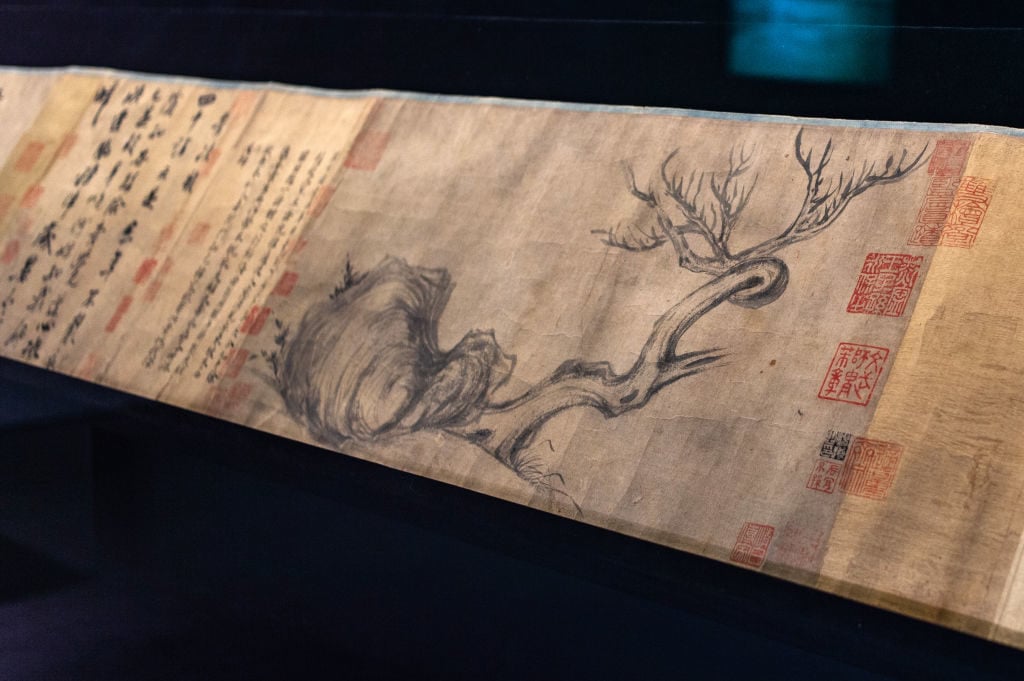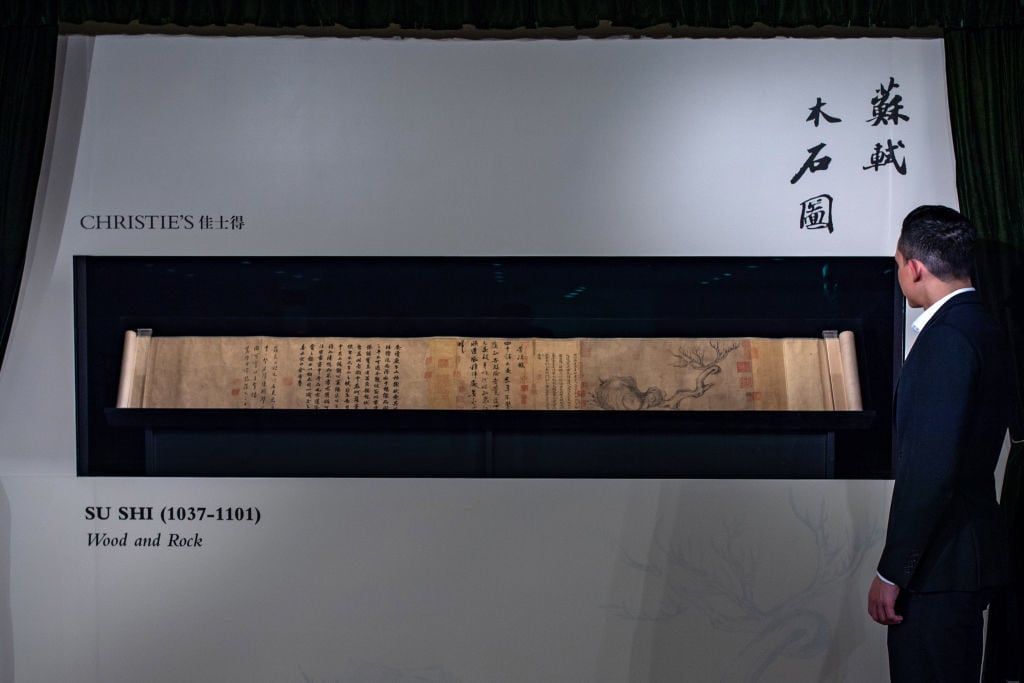Auctions
A Rare 11th-Century Scroll by the ‘Chinese da Vinci’ Sold for Nearly $60 Million at Christie’s Hong Kong
But some observers are underwhelmed by the price.

But some observers are underwhelmed by the price.

Henri Neuendorf

A Song dynasty painting by Chinese artist Su Shi from the 11th century sold for $HK 463.6 million ($59.2 million) at Christie’s Hong Kong on Monday. The work is one of only two known scrolls by the Chinese artist, statesman, and scholar, who has been described as “the Chinese da Vinci.”
Although it’s difficult to interpret a nearly $60 million result as a disappointment, some have viewed the sale as a sign of a contracting market. According to the South China Morning Post, political and economic uncertainty, a looming trade war with the US, and elections in the disputed Chinese territory of Taiwan have contributed to a recent cooling of the region’s art market.
Taking a page from its Salvator Mundi playbook, Christie’s relentlessly promoted the work and marketed it as “possibly the world’s rarest and most valuable Chinese painting.” Clients had to pay a $20 million deposit just to access a special gold paddle to bid on the work. (Similarly, those bidding on Leonardo’s Salvator Mundi had a designated red paddle.)
But as with Salvator Mundi, the high-profile lot had its fair share of detractors. The South China Morning Post reports that some had lingering doubts about the authenticity of the scroll, which had never been publicly exhibited and was part of a largely undocumented imperial collection. (The other scroll by the artist is in the collection of the National Palace Museum in Taiwan.)

A staff member of Christies stands in front of ‘Wood and Rock’ by Song Dynasty scholar Su Shi (1037-1101) at Christies Hong Kong. Photo: PHILIP FONG/AFP/Getty Images.
Christie’s tried to win over clients by emphasizing that the colophons, or annotations, of Su’s contemporary Mi Fu provided strong evidence of the work’s authenticity and age. (The relatively small painting of a gnarled tree and a rock is set on a larger scroll featuring notes on the painting written by Mi and three other calligraphers.)
When the work hit the auction block, it drew just three bids, eventually selling to a buyer on the phone with Christie’s Asia president Rebecca Wei. The sale price of $HK 463.6 million ($59.2 million) exceeded the reported pre-sale estimate of “in excess of $51 million,” but missed the auction record for a Chinese painting or calligraphy.
A set of Qi Baishi’s ink-brush panels, Twelve Landscape Screens (1925), sold for $140.8 million (931.5 million yuan) last December at Poly Beijing, while a 1985 painting by Chinese-French artist Zao Wou-Ki fetched $65 million in September at Sotheby’s Hong Kong.
Nevertheless, the scroll set an in-house record for Christie’s, becoming the most expensive work ever sold by the house in Asia. A representative for Christie’s did not immediately respond to artnet News’s request for comment on the reported skepticism surrounding the work or the final result.
It had reportedly been sold to a Japanese collection in the 1930s and consigned to Christie’s by a Japanese collector.
Fears of a market contraction were stoked at Christie’s Asian 20th century and contemporary art evening sale on Saturday, which netted HK$425.3 million ($54.2 million), substantially less than the HK$1.56 billion ($199.2 million) achieved by Sotheby’s Hong Kong in September.